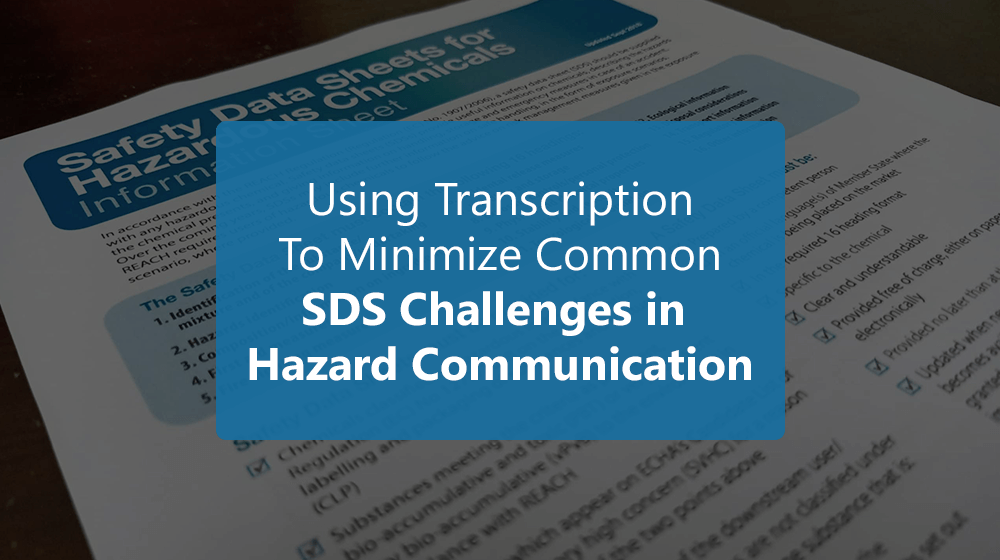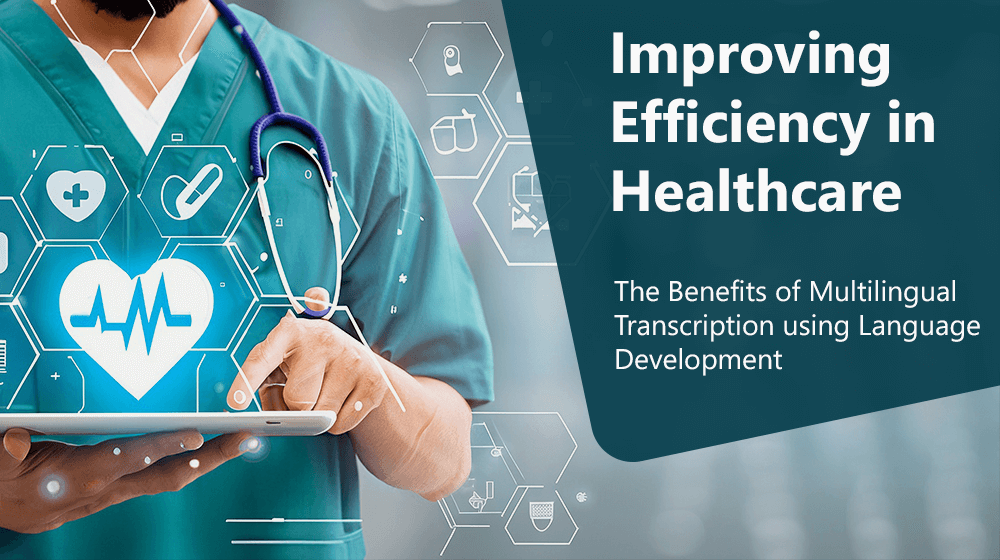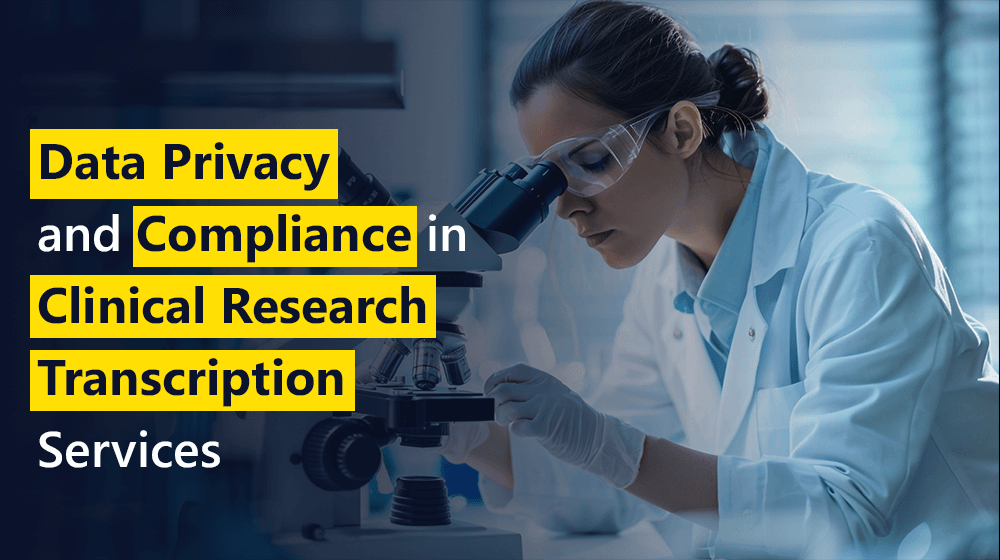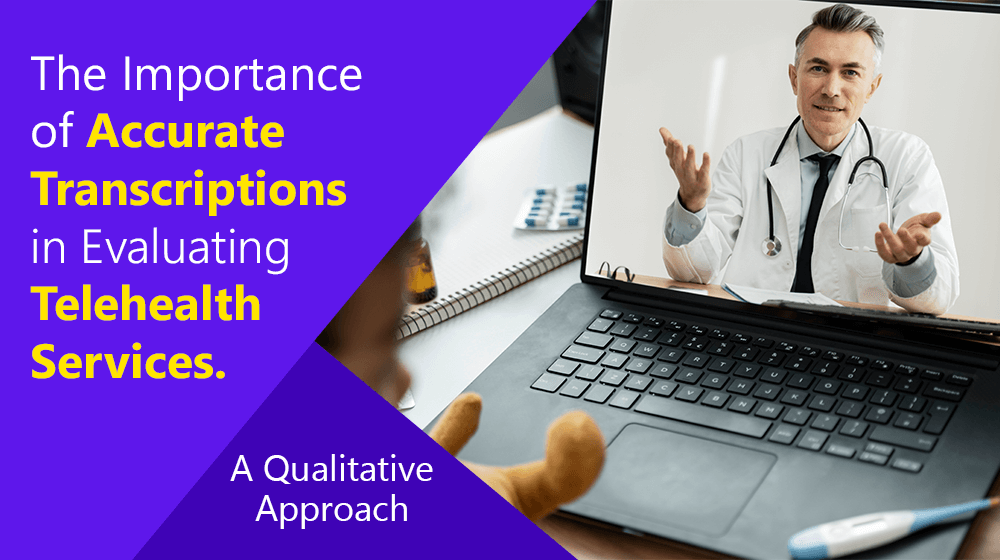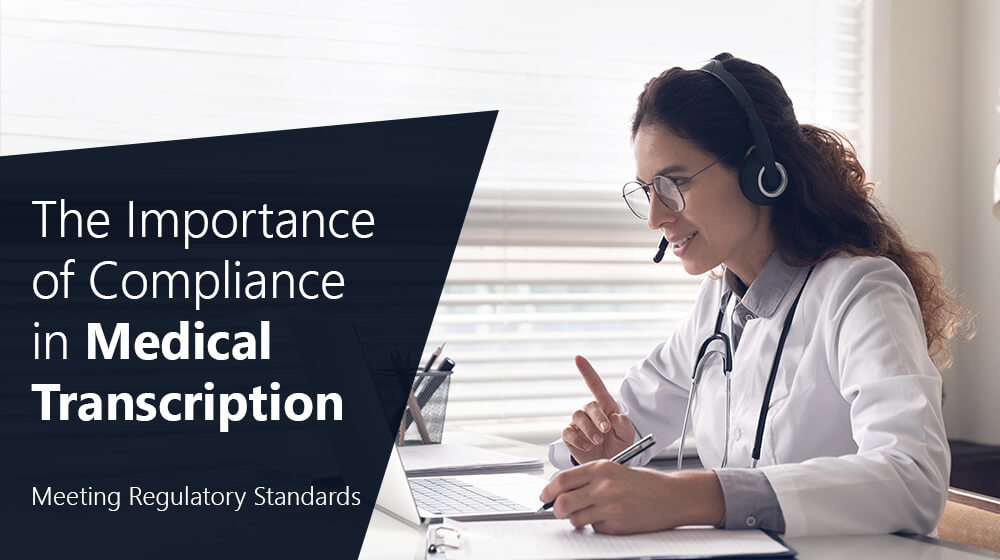Most hospitals today rely on digital databases, with an average hospital generating 50 terabytes of health data annually.Medical transcription services ensure accurate, secure management of large volumes of medical data, following industry best practices and regulatory standards.This allows healthcare professionals to focus more on patient care, without the burden of documentation and data collection. Read on to discover how these services benefit hospitals in detail.
Medical Transcription Services For Hospitals
Here’s how transcription services are beneficial for hospitals:
Easy Communication With Diverse Patients
Hospitals often serve a diverse population, where communication challenges can affect patient care. Transcription services convert spoken language into accurate written text across multiple languages. This ensures that important medical documents including diagnoses, treatment plans, and prescriptions, are clear and understandable for patients.
By converting medical conversations into a language patients understand, hospitals can enhance trust and compliance, minimize misunderstandings, and significantly improve health outcomes.
Effortless Documentation from Conversations
Managing the flow of patient information can be challenging with a large number of patients and limited time. A study in the Annals of Internal Medicine states that physicians spend an average of 16 minutes and 14 seconds per patient encounter using electronic health records (EHRs). Transcription services manage this issue by converting audio recordings of doctor-patient communications, procedures, and medical notes into organized text documents.
This approach not only saves valuable time but also ensures that medical staff can focus on patient care rather than administrative duties. With reliable transcriptions, critical details are easily captured, allowing for a more efficient and error-free documentation process.
Billing Accuracy With Precision
The journey from medical services to financial reimbursement relies on accurate documentation. Transcription services enable hospitals to maintain precise records of diagnoses, treatments, and procedures, which are required for medical coding and billing.
By capturing every relevant detail, transcription helps coders assign the correct billing codes, reducing the chances of rejected claims and securing proper payment for services. This accuracy supports the hospital’s financial stability while ensuring adherence to healthcare regulations.
Accurate transcripts are crucial as they facilitate easier health insurance claim management. 30% of healthcare claims are denied due to errors in medical documentation, which can be minimized with accurate transcription.
Supporting Clinical Research and Continuous Learning
Hospitals also serve as prominent learning centers for medical students and researchers. Transcription services strengthen these roles by providing detailed records of clinical trials, research interviews, and educational sessions.
This encourages data analysis, supports accurate publication of findings, and is an important resource for training healthcare professionals. Transcriptions of lectures, case studies, and training materials also create an ongoing learning environment that aids in the development of medical expertise.
Capturing Every Detail in Telemedicine Consultations
The expansion of telemedicine, with telehealth visits increasing by 50% during the COVID-19 pandemic, has made transcription services essential in documenting virtual healthcare interactions. Transcriptions ensure that all medical advice, patient responses, and treatment plans discussed during remote consultations are accurately recorded.
Accurate documentation is crucial for follow-up treatments, maintaining consistent records across providers, and serves as a reliable reference for legal protection, ensuring that all advice and patient interactions are properly recorded for potential legal or compliance issues. With telemedicine continuing to grow, transcription bridges the gap between in-person and remote care, enhancing the quality and continuity of patient care.
Staying Compliant and Prepared with Detailed Records
Legal and regulatory compliances require hospitals to maintain accurate and secure medical records, and transcription services help with this. By providing detailed, written accounts of patient interactions and medical procedures, transcription supports compliance with regulations like Health Insurance Portability and Accountability Act (HIPAA).
Accurate documentation through transcription services also hospitals meet Joint Commission standards by ensuring clear and complete medical records.These records serve as official documentation for audits, legal disputes, or regulatory checks, ensuring that hospitals can confidently meet legal requirements while continuing to deliver quality healthcare.
Protecting Sensitive Patient Data
Transcription services safeguard sensitive patient data and ensure HIPAA compliance through the best security measures. These include advanced encryption standards like AES-256 for secure data storage and protocols for safe data transmission.
Role-based access controls are implemented to restrict access to sensitive information, ensuring only authorized personnel can view or handle patient data.Professional service providers also conduct regular security audits, often on a quarterly or annual basis, to identify and address potential vulnerabilities, further enhancing data protection.
Also, the documentation is used for informing the workforce about privacy rules and regularly checking for any security issues. As a result, all processes meet legal requirements and continue to keep patient information secure.
Better Emergency Response Mechanism
In life-saving situations, every second matters. Hospitals can improve response times in critical conditions with well-organized and easily accessible data from medical transcripts. This approach reduces the workload on overburdened doctors and surgeons, who often struggle to balance patient care with paperwork.
By outsourcing transcription services, hospitals enable medical professionals to focus on saving lives while ensuring that accurate and timely documentation is maintained. For instance, capturing critical ICU notes and monitoring real-time changes in a patient’s vital signs allows healthcare teams to promptly adjust interventions, ensuring coordinated and timely care decisions. This can be helpful in clear communication among medical staff, especially during shift changes or emergencies.
Incorporating With Trending Technologies
Transcription services supported by Automated Speech Recognition (ASR), streamline the process of converting spoken medical notes into written records. ASR reduces manual transcription time while maintaining accuracy through human review. These services also integrate with Electronic Health Record (EHR) systems like Epic and Cerner, allowing automatic updates to patient records and reducing errors.
Hospitals benefit from fast turnaround times, with standard transcriptions ready in 24-48 hours and STAT (Short Turnaround Time) services for urgent cases. This keeps patient records up-to-date, helping healthcare providers focus on patient care and make better, faster decisions.
Final Thoughts
Additionally, transcription services help bridge communication gaps by translating complex medical conversations into clear and concise language, ultimately improving patient compliance and outcomes.
Medical transcription services streamline patient care and enhance efficiency in hospitals. By converting audio recordings into well-documented text, hospitals ensure that vital patient information is accurately captured and easily accessible. This enables healthcare professionals to focus more on delivering quality care and less on administrative tasks.
At ANT Datagain, we provide accurate, affordable, and timely transcription services for hospitals. Partner with us to reduce paperwork, boost efficiency, and improve the patient experience.




